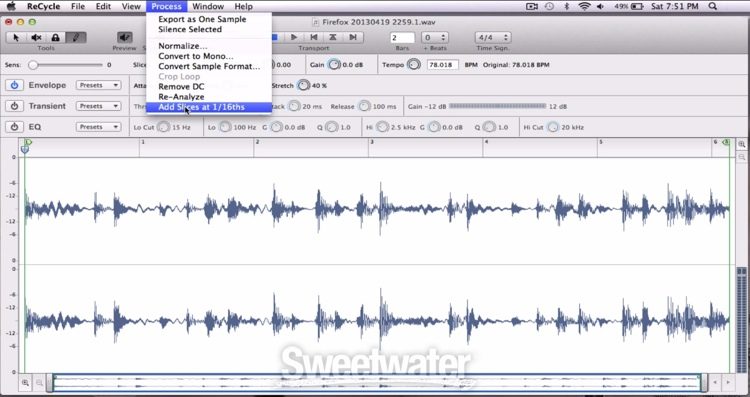

Most of the drum loops that people deal with are in 4/4 signature, so this makes life easy. If you donʼt, then you can take the loop and loop it in your sequencer to find the right tempo, number of bars, and beats. But it is extremely helpful if you can ascertain as much information about the audio sample as possible prior to any chopping/slicing.

If you import a loop into Recycle and do not know these, then donʼt worry too much as Recycle has tools to help you in this department. Important factors to consider are Bars, Beats, and Signature. Recycle also provides a time-stretching function which helps greatly in manipulating samples to fit to a required tempo without altering the pitch, plus a host of other editing tools including the much-valued BPM detection tool which is useful in detecting the tempo/BPM of a given sample. Recycle uses the same principles as Hitpoints/Slices by detecting peak values using a sensitivity function and once it has analysed the audio it will create slices (segments) based on the peak values it found which can then be processed in isolation or globally.
Propellerhead recycle adsr tutorial software#
The process entails importing a sample or loop into Recycle which is then sliced/chopped into smaller segments which can then be edited to taste and exported for use in the DAW or any software that can import samples. One of the original and most powerful of all Slicing Tools is Propellerheads Recycle.

Propellerhead recycle adsr tutorial how to#
Chopping/Slicing Beats Using Recycle is a detailed video tutorial explaining how to use Propellerhead Recycle to chop/slice drum breaks.


 0 kommentar(er)
0 kommentar(er)
